
Diposkan oleh
Angga Rimba
di
5:54 AM
![]()

Namata is located in Western Savu. Namata is a traditional village where the ritual ceremonies are frequently held. There are megalithic stones and traditional houses. It is located in the Rai Lolo village, 3 km from the capital city of Heb'a (Seba) in western Savu district. There is a stone carving of a four mast tall ship. Though the writing beneath has faded, villagers say the Portuguese drew it in 1684.
Diposkan oleh
Angga Rimba
di
5:53 AM
![]()

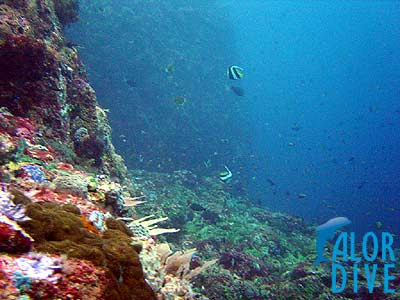
Diposkan oleh
Angga Rimba
di
5:44 AM
![]()

Rote just off the southern tip of Timor Island consists of rolling hills, terraced plantations, and acacia palm, savanna and some forests.
The rotinese depend, like the Savunese, on lontar palm for basic survival, but also as the supplement their income with fishing and jewelry making.
Diposkan oleh
Angga Rimba
di
5:42 AM
![]()
Diposkan oleh
Angga Rimba
di
5:38 AM
![]()

Flores is part of the East Nusa Tenggara province. The island is split into five regencies (local government districts); from west to east these are: Manggarai, Ngada, Ende, Sikka and Flores Timur.
Flores has several active and dormant volcanoes, including Egon, Ilimuda, Leroboleng, and Lewotobi.
The west coast of Flores is one of the few places, aside from the island of Komodo itself, where the Komodo dragon can be found in the wild. The Flores giant rat is also endemic to the Island. In September 2004, at Liang Bua Cave in western Flores, Paleoanthropologist discovered skeletons of a previously unknown hominid species. Homo floresiensis, affectionately termed hobbits after the small characters in the Lord of the Rings, appear to be miniaturized versions of Homo erectus standing about one meter tall. They may have existed until as recently as 11.000 BC. Local reports of elf people, the Ebu Gogo, or the Orang Pendek of Sumatra, have caused speculation that Flores man may have survived into the historical period, or even to the present. The discovery has been published in the October 28, 2004, issue of Nature magazine. Flores was also a habitat of the extinct Stegodon dwarf elephant until approximately 18,000 years ago.
There are many languages spoken on the island of Flores, all of them belonging to the Austronesian family. In the centre of the island in the districts of Ngada and Ende there is what is variously called the Central Flores Dialect Chain or the Central Flores Linkage. Within this area there are slight lingistic differences in almost every village. At least six separate languages are identifiable. These are from west to east: Ngada, Nage, Keo, Ende, Lio and Palu'e, which is spoken on the island with the same name of the north coast of Flores. Locals would probably also add So'a and Bajawa to this list, which anthropologists have labeled dialects of Ngadha.
Portuguese traders and missionaries came to Flores in the 16th century, mainly to Larantuka and Sikka. Their influence is still discernible in Sikka's language and culture.
Diposkan oleh
Angga Rimba
di
5:32 AM
![]()
Larantuka is a neat clean seaport with a beautiful view. Everything is within walking distance except for the pier where the boats leave for Timor (4-5 km from town). [...Larantuka is a] little port nestled at the base of a tall hill at the eastern end of Flores, from where Solor, Adonara, and Lembata islands (the small islands near by) are visible across the narrow strait. [...] people are very outgoing and friendly. Their bemos are brightly painted with murals on the sides and their radios are blasting the latest tunes. Lots of Catholic churches line the roads with a few mosques sprinkled in. [...] There are a number of tuna boats at the docks. They have a big square platform on the bow where fishermen line up with bamboo poles line up flipping hooked tunas
The town of Larantuka is a quaint little place with the friendliest people we met all the way across Indonesia. On landing on the beach we were mobbed by a group of kids shouting "Hello Mister!" the standard Indonesian English greeting. When they saw I had a camera, they started to ask me to take their picture. Opening up the camera caused all sorts of pandemonium and the parents suddenly showed up wanting to get in the picture as well. [...] When he rewound the tape and played it back the crowd watching themselves on the small screen couldn't stand up they were laughing so hard. We left our new friends of the beach and set out in search of [my friend who we found...] sitting in the middle of about 50 children. Every time he would ask one of them what their name was, riotous laughter would break out in the whole group.

Larantuka is a neat clean seaport with a beautiful view. Everything is within walking distance except for the pier where the boats leave for Timor (4-5 km from town). Even that is a pleasant walk if we do it early enough before it gets too hot. A little port nestled at the base of a tall hill at the eastern end of Flores, from where Solor, Adonara, and Lembata islands (the small islands near by) are visible across the narrow strait. An Old Portuguese cultural heritage like the Easter Procession is held in this town, and worth seeing. Flores people are very outgoing and friendly. Their bemos are brightly painted with murals on the sides and their radios are blasting the latest tunes. Lots of Catholic churches line the roads with a few mosques sprinkled in. Larantuka is a pleasant little town on the Far East end of Flores. There is a harbor in town and another one a few kilometers away where the ferryboat leaves to Kupang and Rote in West Timor. The boats going to Alor leave from the one in town. There are a number of tuna boats at the docks. They have a big square platform on the bow where fishermen line up with bamboo poles line up flipping hooked tunas.
There are 6 to 8 water jets that spray a steady stream of water on the surface to attract the tunas and then baitfish are tossed in driving the tunas into a feeding frenzy. These are not the big yellow or bluefin tunas but the smaller ones about 2 feet in length. They are often seen for sale by roadside vendors along the road from Maumere. There are some New Orleans style cemetaries along the beach on the way. They are well maintained and very colorful. These people put a lot of work into them.
Diposkan oleh
Angga Rimba
di
5:26 AM
![]()
Diposkan oleh
Angga Rimba
di
3:18 PM
![]()
The Rinjani Trek is managed by a unique partnership of National Park, tourism industry and the local community. Activities focus in the Community – run cooperatives at Rinjani Trek Centre ( RTC ) in Senaru and the Rinjani Information Centre ( RIC ) in Sembalun Lawang. Under the guidance of the Rinjani Trek Management Board ( RTMB ), each are run by a stakeholders’ committee who look after roster systems for guides and porters, village tours, trek trail maintenance, and handicraft sales. Revenue from tourism activities and entry fees is used for conservation, training and management of the Rinjani Trek, thus ensuring sustainability.
 Conceptually, the project started with three stakeholder circles labeled “Park Management”, “Community Development” and “Tourism”. Whit Project assistance, the Park set out to engage with the stakeholder groups in each of the circles, independently at first and then, as the groups got used to deal with each other, increasingly together. This approach recognized that it takes time for the multi-skilled “cross-over” people that ecotourism requires (people who can operate in between the circles) to emerge.
Conceptually, the project started with three stakeholder circles labeled “Park Management”, “Community Development” and “Tourism”. Whit Project assistance, the Park set out to engage with the stakeholder groups in each of the circles, independently at first and then, as the groups got used to deal with each other, increasingly together. This approach recognized that it takes time for the multi-skilled “cross-over” people that ecotourism requires (people who can operate in between the circles) to emerge.A two days-one night, great experience over Pegasingan Hill We invite you to join our two–day walk through the rice fields, to chat with the farmers and enjoy the scenery from the…
Program Details
a total area of 41,330 hectares
Location : Regencies; West Lombok, Central Lombok and
East Lombok, Province of West Nusa Tenggara
Rainfall 2,000 mm/year (on average)
Altitude 550 – 3,726 m asl.
Geographical location 116°18′ – 116°32′ E; 8°18′ – 8°33′ S
Recently tourists have purchased trekking packages from a false office in Padang Bai, Bali claiming to represent the Rinjani Trek Management Board (RTMB). Please note that RTMB has only one main office located at the Lombok Raya Hotel in Mataram with representative offices at the Rinjani Trek Center in Senaru and Rinjani Information Center in Sembalun, all located on the island of Lombok. Any other locations claiming to represent RTMB are fraudulent and should be avoided. If you have any questions, Contact Us to submit an enquiry.
Benang Stokel and Benang Kelambu Waterfalls Panorama Trekking

BENANG STOKEL WATERFALL
Benang Stokel,-Meaning Literally, a Ball of thread, located in Aik Berik Village, Batukliang Utara Sub-district, 22 km north of Praya. Fresh and cool water falls from 20 meter high trough the steep rock face, covered by the variety of vegetations; the moss, forming lush green wall till the raft where lies small valley for bathing. The falling water seems to ply down joyfully, sliding one after another, cussing down and sounded as if boiling water. Local people believe the water has curative qualities. Facilities serve such food stalls, coffee stalls and realtor. This place is crowded by local people, especially Sunday or holidays.
By the increase number of adventure interest, a trekking route into Segara Anak Lake has recently opened in this area, as well security post.

BENANG KELAMBU WATERFALL
As if the curtains hanging over the air, blown by fresh wind, forming the beautiful space of scenery, is Benang Kelambu Waterfall. It is located only 1 Km from Benang Stokel, could be reached by car then visitors trail through the dense forest inhabited by long-tailed monkeys. This bathing site has natural cold water that flows over the slits of the stones in 35 high. Visitors favor this place for bathing while enjoying the beautiful panorama especially in Sunday and holidays.

Bored with big city atmosphere, visit the vivid green nature and pure culture on this tour. Drive to Central Lombok to find and enjoy the fresh air of rainforests and views of terraces with community farming activities.
Benang Kelambu waterfall Lombok located about 30 minutes walking from Benang Stokel waterfall Lombok. It will take an extra energy because its rather like trekking trail, up and down trail and more adventurous. The trail surrounded by social forest mixed up with rain forest. It’s also new-opened trail, it’s new managed access to this benang kelambu waterfall. And the visitors are countable.The waterfall is special and very unique. The waterfall look likes a big net which is spread out, that’s way it’s called Benang Kelambu in local language Sasak. It’s about 40m of height and have two graded irregularly. The dense of herbs make it seem more naturally.
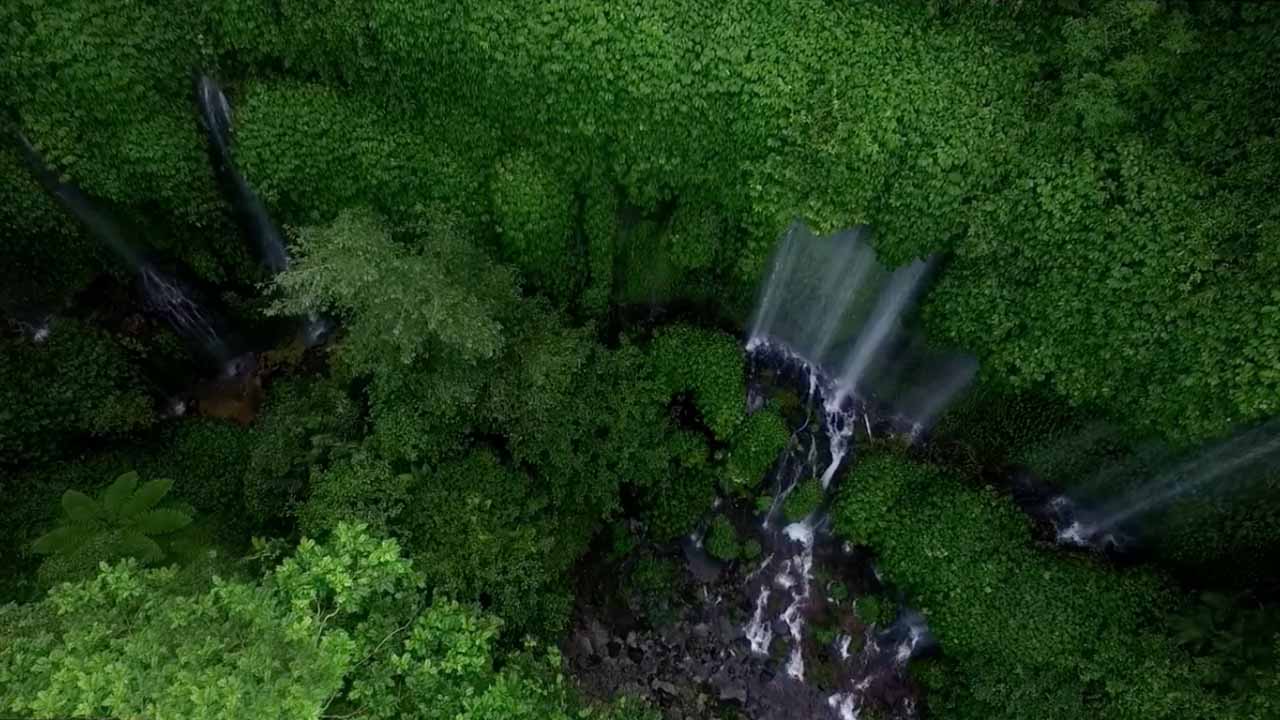
What to bring:
Make sure you bring your camera, sun hat and sun cream, comfortable walking shoes, small backpack and bottle water.
Source:http://rinjanimountain.com
Diposkan oleh
Angga Rimba
di
3:14 PM
![]()

Mayura and Bale Kambang, had built on 1743 by Balinese Hindu's Dynasty; Anak Agung Gede Karangasem. It's now become a recreational park when seasonally used for Music Festivals.

Balinese conquest of Lombok resulted in bringing strong Hindu influences on the lives of the indigenous people of Lombok. Temples were built dedicated to Hindu pantheons and some of them till this day are revered and visited. Lombok can be described as paradise in miniature, the calm sea, diverse flora and fauna and a tranquil way of life made this paradise favorite of Balinese kings too. They built palaces where much of fun, frolic and work was done, the ruins of such palaces still allow one to get a glimpse of royal life. Before Lombok was colonized by the Dutch the island was part of Karangasem Kingdom of Eastern Bali. It was the most powerful Balinese kingdom in the eighteenth century.
The kingdom’s last raja was very fond of water and has several fountains, moats and pools created. In Lombok, Taman Mayura Palace is one such remnant of the Balinese royal palace. Reaching it is only 1.5 hours from Villa Atas Ombak.
Diposkan oleh
Angga Rimba
di
3:01 PM
![]()
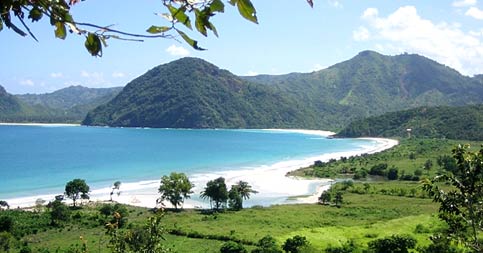
South coast of Lombok is famous for the high waves and Kuta Lombok is a good base for the surfers. Many visitors come back year after year to surf the famous Kuta waves. Whether you are an experienced surfer or a beginner you will find the surf spot for you. Surf boards & boogie boards are available to rent or bring your own.
You will need transport to the waves from Kuta, most guests choose to rent motorcycles which come with a special surf rack attached. The new International Airport is now being developed and big plans to develop a whole stretch of the superb south coast with luxury hotels. After many years of speculation there are signs something is happening, with the road from Praya completely remade and big new road running to as yet undeveloped beaches. Meanwhile, Kuta and South Lombok is now getting famous and raise visitor's curiosity.
Diposkan oleh
Angga Rimba
di
2:57 PM
![]()
The name of Narmada is taken from Narmadanadi, the son of a very sacred Ganges River in India. For Hindus, the water is a sacred element that gives life to all beings in this world. Water emanating from the soil (spring) is associated with Tirta Amrita (immortality water) emanating from Kensi Sweta Kamandalu. Formerly the possibility of Narmada name used to name the name of springs that form several ponds and a river in that place. Eventually used to refer to the whole complex of temples and Narmada Park.

Narmana Park Complex
Narmana Park complex in Lombok it can be divided into several parts, the main gate, jabalkap, twin lake, gate bracelet / paduraksa, mukedes, padmawangi lake, lodge hall, bright hall, patandaan, sakapat buildings, halls bancingah, Pura hump and Pura Lingsar. The following will described the parts of the Narmada Park from the main gate.
Arch-shaped main gate and was briefly on the north. Once we enter the main gate jabalkap page, in which there is the twin lake. In the southern part jabalkap there is a gate called the Gate Bracelet or Paduraksa that links between pages jabalkap with mukedes page. On page mukedes there are several pieces of buildings, among others Sanggah Temple, Hall and Hall Pamerajan lodge (one of the buildings between the king's residence). In the southeast there is a gate mukedes page to the page pasarean. On this page there are also paseran Hall lodge, Lake Padmawangi, Pawedayan, pawargan, Light Hall, and a new building that does not clear the status. Light Hall is a building that serves as a resting place / king bed, shaped stage made entirely of wood. The top of the building which used to enjoy the open view of the Meru temple on the east side. Doors and windows Light Hall is patterned single month and herbs.
In the east there is a page pasarean hump or Pura Pura Narmada. Architecture resembles a staircase shape punden. The most sacred part contained in the central courtyard in the most above steps (temple in Bali's most sacred pages is generally the most rear). This temple temple belonging to the universe or a temple common to all Hindu Dharma and is one of eight old temple on the island of Lombok. Narmada temple situated on a cliff-steps staircase, being under the cliffs of the valley and the lake there are mermaids swimming child soon.
South there pasarean page patandaan page. On this page there are two buildings patandaan sakapat wantilan which is a kind or four-poster outdoor stage. On this page often held a variety of performances. While in the south there Patandaan bancingah page. Left on this page is now just a wall around the yard with two gates for a while.
Elements of other buildings that actually there are many, including showers nine (Siwak) is located on the Segara Anak. The shape of the building with two separate sections dorogancet resemble traditional building in Central Java. This building includes a building sacred to both Hindus and followers of Dharma Tilu Time.
In addition, there are also a source of Hall petirtaan its water comes from Mount Rinjani. Petirtaan Hall is also the meeting place of three sources of water, namely Suranadi, Lingsar, and Narmada. For the eyes of its water comes from Mount Rinjai and meeting place of three other springs, the water that exist in Central petirtaan can be trusted to make the people who drank and washed her face with water in it will stay young.
Other buildings in the Narmada Park complex in the form of landscaping has been difficult to trace its authenticity. According to the map of 1899 parks in the Narmada Park complex are: Angel Park, Garden Anyar Paresak Parks, and Parks hump. Newer parks and park hump is now a township resident. While the park has now become Paresak orchards with the main crop is the mangosteen fruit. (Ali Gufron)
Diposkan oleh
Angga Rimba
di
2:54 PM
![]()

Many people think Bali have too solid and crowded so that make Lombok island become a very good alternative, because its natural beauty not fail by Bali. More than anything else both very nearby. Lombok island offer resorts which very capture. Available also hotels at the price of varying, from costly until economic valuable hotel. Lombok island have separate fascination for tourist. Many tourist pass the time to enjoying sunset in Senggigi beach.
Besides beautiful beach, Senggigi also have the amaze under sea. Senggigi under sea is very beautiful, and tourist can do snorkling as satisfied as because its wave do not big. In Senggigi Beach you also can try to shar water sport. Don’t far from Senggigi Beach, there are Batu Bolong Gate, About 3 km from Senggigi Beach. This gate is a woke up gate above rock which located in coastal edge. From this place also seen Agung Mount in Bali Island. Don’t far from Senggigi Beach also there are artistic market, selling various unique goods as souvenir.

Senggigi Beach Lombok is the main tourist strip of the Indonesian island of Lombok, stretched out along the several kilometers of the beachfront, just to the north of the capital Mataram. The site of a building frenzy in the late 1990s when Lombok was hyped to be the next Bali, the communal violence of 2000 and the 2002 Bali bombing dealt Senggigi a severe blow, with tourist numbers declining precipitously and many construction projects halted.

Senggigi Beach Lombok is the most developed area for tourists on Lombok. You can find a variety of restaurants, bars, discotheques, travel agents, photo processors, money changers, souvenir shop and a range of accommodations starting from budget guest house to 5 star hotels. Restaurants and small cafes line the colorful main beach road. Swimming off the beach is safe.
Diposkan oleh
Angga Rimba
di
2:41 PM
![]()
Diposkan oleh
Angga Rimba
di
2:28 PM
![]()
Entering the tomb was started from a great gate facing south. The main building called the Dome Tomb of Bung Karno. Dome-shaped tomb Bung Karno Joglo building, the building art form of Java that has been known long ago.

Bung Karno Library is located in the south together with the Tomb complex on Jalan Bung Karno Kalasan no. 1 Blitar. Bung Karno Library is managed by the National Library through UPT Bung Karno Perpusta kaan (PPBK) in the City of Blitar.
Besides the library building, was filled with 2 PPBK artwork, the form of the Statue of Bung Karno, located in the middle of building a first floor, and wall reliefs contain Bung Karno journey that spans the pool from the library to the tomb.
Haul warning other than the commemoration of Bung Karno, Bung Karno dying day since July 21, 1970, also became a vehicle for teaching menteladani struggle and Bung Karno. The highlight of the celebration took place in the House of Gebang Palace Gebang or Ndalem Gebang an elderly residential home Bung Karno.
This palace is located on jl. Sultan Agung no. 69, Biltar. As the show haul Bung Karno from year to year than at the Palace Gebang event was also held at the Bung Karno tomb complex continuing sow flower show in the morning.
Diposkan oleh
Angga Rimba
di
2:24 PM
![]()
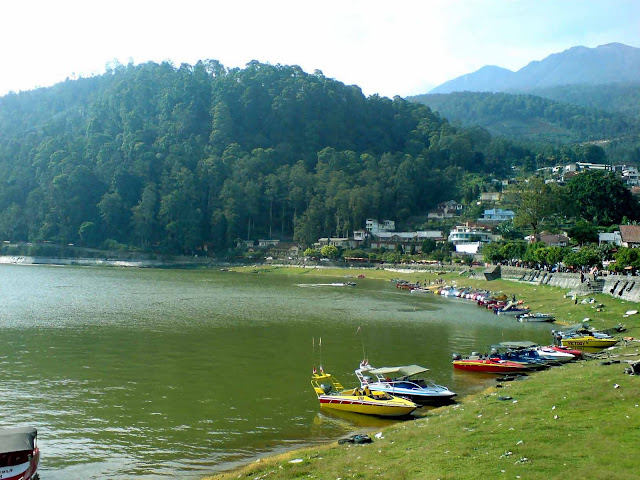
Sarangan lake is one of main tourism destination in Magetan and supported by many facilities which will make your vacation worth enough. Facilities that we can find there are hotels, Restaurants, Playing gardens and many others. With more that 19 restaurant there we can select various menus.
Some annual activities that interested enough like school holiday, Labuh sesaji, Ledug Sura and skyrocket party bcome some moment that interesting for most people to be visited and take part in crowded. We can do the other activity during spend our vacation there, like riding horse to go aroung sarangan lake, going aroung sarangan lake with ship if we we willing to pay Rp 20.000,00.
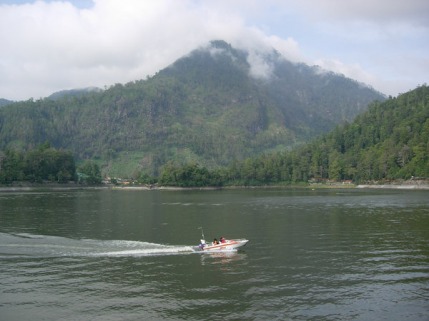
Then if you want to bring some thing for people in your home you can get many places that provide many kinds of souvenirs.
Magetan regency also has industries of feather art, bamboo, and traditional music. It also developed the agriculture and horticulture that give it the vegetables and oranges. The famous orange of Magetan is pamelo and Srinyo orange. Those orange plantation is located in Sukomoro and Bendo district, Magetan.
Beside its tourism object and orange plantation, Magetan also famous with its traditional art such as; Gondang Baru dance, Iring-iring dance, and Godril dance.
Visit Magetan tourism in East Java - Indonesia and enjoy its wonderful natural tourism with various handmade souvenirs.
Diposkan oleh
Angga Rimba
di
2:20 PM
![]()

Coban Talun waterfall is surrounded by forest and cool mountain. Because of the natural beauty, this area often used as camping ground area. This camping ground is located in one area with Coban Talun waterfall. The natural and cold area, make many visitors, either from education world and public, interesting to visit this camping. But the visitors should have fit stamina to reach the location, because the path is sloping way.
Japan Cave Of Coban Talun
A Cave that has 5 meters depth is located in Coban Talun area, not far from its pool. It is located in Junggo sub-village, Tulungrejo village, Bumiaji district. This cave has unique structure; looks like letter ‘T’.
Diposkan oleh
Angga Rimba
di
2:14 PM
![]()
Jatim Park is suitable for family recreation. The recreation area sites here offer unforgettable tour and can used as alternative media of study for your children.

Diposkan oleh
Angga Rimba
di
2:11 PM
![]()
Diposkan oleh
Angga Rimba
di
2:05 PM
![]()

Batu City is the main tourism object for domestic and foreign tourists. There are many tourism objects in Batu that become the dream object for those visitors, especially its mountain tour. To support those tourism objects, Batu has facilitated with hotels, inns, villas and the other lodges, which has mountain nuance. Beside that, Batu city also called as “Batu City A Millions Beauty”.
Batu city also produces apples, vegetables, and garlic.
Diposkan oleh
Angga Rimba
di
1:57 PM
![]()


To get to the peak Bromo with its largely open crater, which belch of smoke expelling from its bottom. Mount Bromo has settled by Tenggerese for about thousands years. They who are good of God follower and always do their custom strickly, has historical relationship with Majapahit. The Antropologist from our country or other country are interesting to do some research, because the Tenggerese are strickly in keeping custom for centuries, without influenced by world's change. So there so many version of the unique of Tenggerese in Probolinggo, it can be in the forth of tale, folktale, serat and kidung, legend and science report.
Bromo Tengger Semeru National Park is the only conservation area in Indonesia that has a sand 'sea'. This unique feature covers a total area of 5,250 hectares at an altitude of about 2,100 m asl.
Beneath the sand sea, seven eruption centres have been found along two intersecting lines, one from east to west and the other from northeast to southwest. From this northeast-southwest line emerged Mt. Bromo, an active volcano which intermittently emits smoke and ash, and is an ever-present threat to the lives of some 3,500 people living below.
The crater of Mt. Bromo has a diameter of about 800 metres from north to south and 600 metres from east to west. Most of the area within a radius of 4 km from the crater centre is considered hazardous.

Diposkan oleh
Angga Rimba
di
1:44 PM
![]()
Diposkan oleh
Angga Rimba
di
3:28 PM
![]()
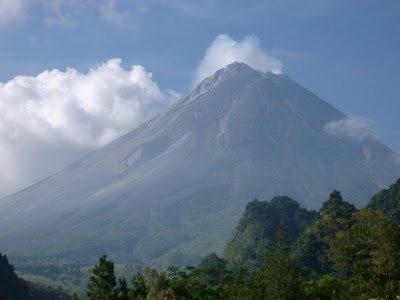

Diposkan oleh
Angga Rimba
di
3:24 PM
![]()



+Pasola+Festival-Sumba+Island.jpg)












